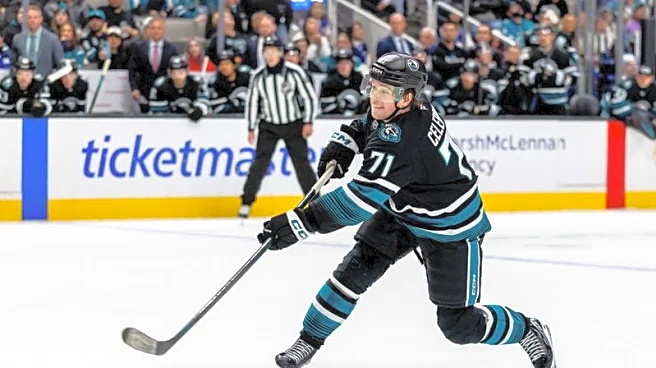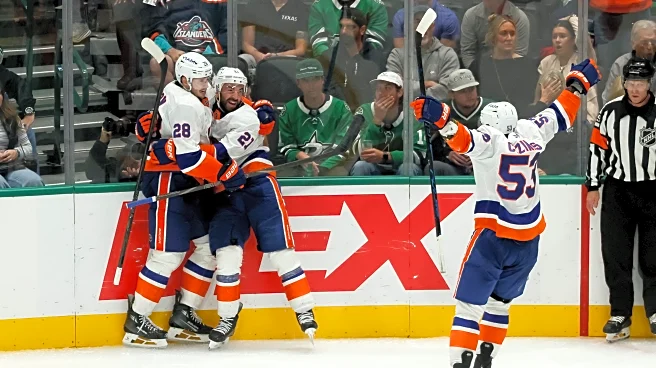What's Happening?
The 2025-26 NHL season has commenced, and several notable players have already secured contract extensions with their teams. NHL general managers are preparing for a projected salary cap increase from $95.5 million to $104 million for the 2026-27 season,
and further to $113 million for 2027-28. This anticipated rise has prompted teams to re-sign key players to lucrative deals. Among the notable restricted free agents re-signed are Dustin Wolf of the Calgary Flames, Logan Cooley of the Utah Mammoth, Lane Hutson of the Montreal Canadiens, and Thomas Harley of the Dallas Stars. Additionally, the Ottawa Senators signed center Shane Pinto to a four-year contract with an average annual value of $7.5 million.
Why It's Important?
The projected increase in the NHL salary cap is significant for teams as it allows them more financial flexibility to retain top talent and potentially attract new players. This financial foresight is crucial for maintaining competitive rosters and ensuring long-term success. Teams that effectively manage their cap space can secure their core players, which is vital for building a strong foundation for future seasons. The re-signing of key players like Shane Pinto indicates strategic planning by teams to capitalize on the upcoming cap increase, ensuring they remain competitive in the league.
What's Next?
As the season progresses, teams will continue to evaluate their rosters and make strategic decisions regarding player contracts. The anticipated salary cap increase will likely lead to more contract negotiations and extensions as teams aim to lock in their star players. General managers will need to balance immediate team needs with long-term financial planning to optimize their rosters. The impact of these decisions will be closely watched by fans and analysts as teams position themselves for success in future seasons.
Beyond the Headlines
The salary cap increase not only affects player contracts but also has broader implications for team dynamics and league competitiveness. Teams with larger budgets may have an advantage in attracting top talent, potentially leading to shifts in power dynamics within the league. Additionally, the financial strategies employed by teams could influence player movement and trade negotiations, impacting the overall landscape of the NHL.
















